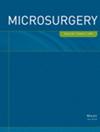Machine Learning-Based Flap Takeback Prediction Modeling: Theory for a Real-Time, Patient-Specific Postoperative Flap Monitoring and Alert System
Abstract
Background
Postoperative free flap monitoring is crucial yet taxing, requiring frequent and often subjective assessments to detect early signs of compromise. The present study aims to develop a machine learning model to predict the risk of flap take-back reoperation due to arterial and/or venous compromise, as a basis for real-time risk monitoring and alerts.
Methods
This retrospective cohort study utilized patient data from a New York City hospital system from 2019 to 2024. Adult patients undergoing free flap reconstruction were included. Data from electronic medical records (EMRs) included demographic and clinical variables. The primary outcome was flap takeback, defined as urgent or emergent microvascular exploration or revision surgery during the same admission. A random forest model was developed and trained on the data with oversampling to balance the training set. Model performance was evaluated using AUROC, sensitivity, specificity, accuracy, and precision.
Results
The study included 458 patient encounters, with a flap takeback rate of 6.1%. The final model achieved a train AUROC of 0.99 and a test AUROC of 0.86. Sensitivity and specificity on the test set were 75% and 78%, respectively, with 78% accuracy. Key predictors included skin integrity, pulse, and diastolic blood pressure.
Conclusions
The machine learning model accurately predicts free flap takeback, offering a proactive approach to postoperative monitoring. Integrating this model into EMR platforms can provide real-time early warning systems (EWS), enhancing early detection and intervention for flap compromise. Future research should validate the model across diverse settings.

 求助内容:
求助内容: 应助结果提醒方式:
应助结果提醒方式:


